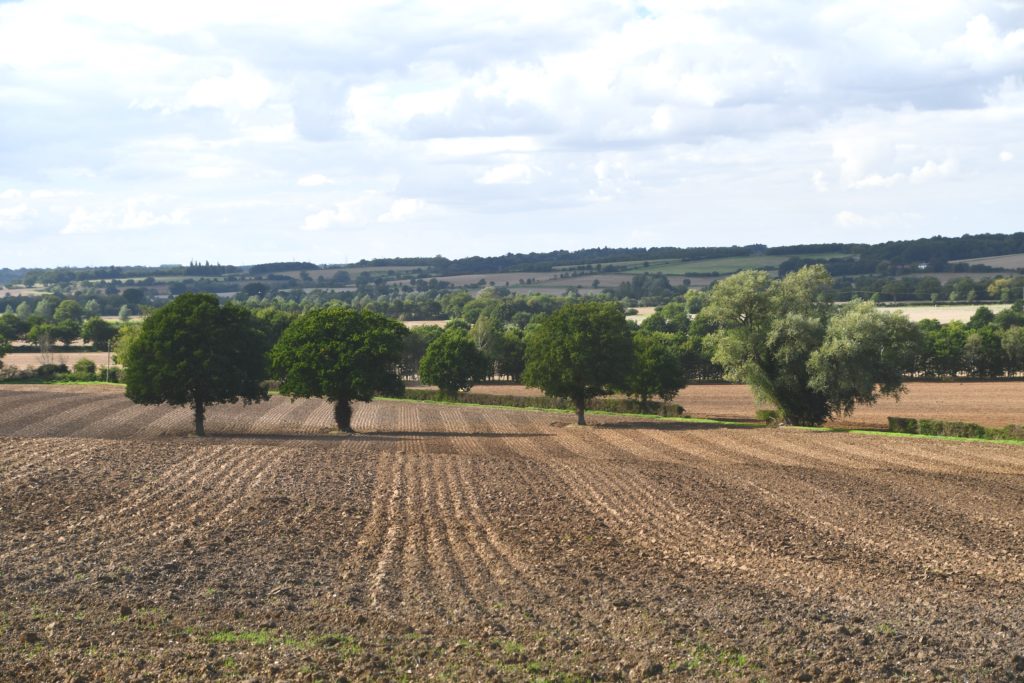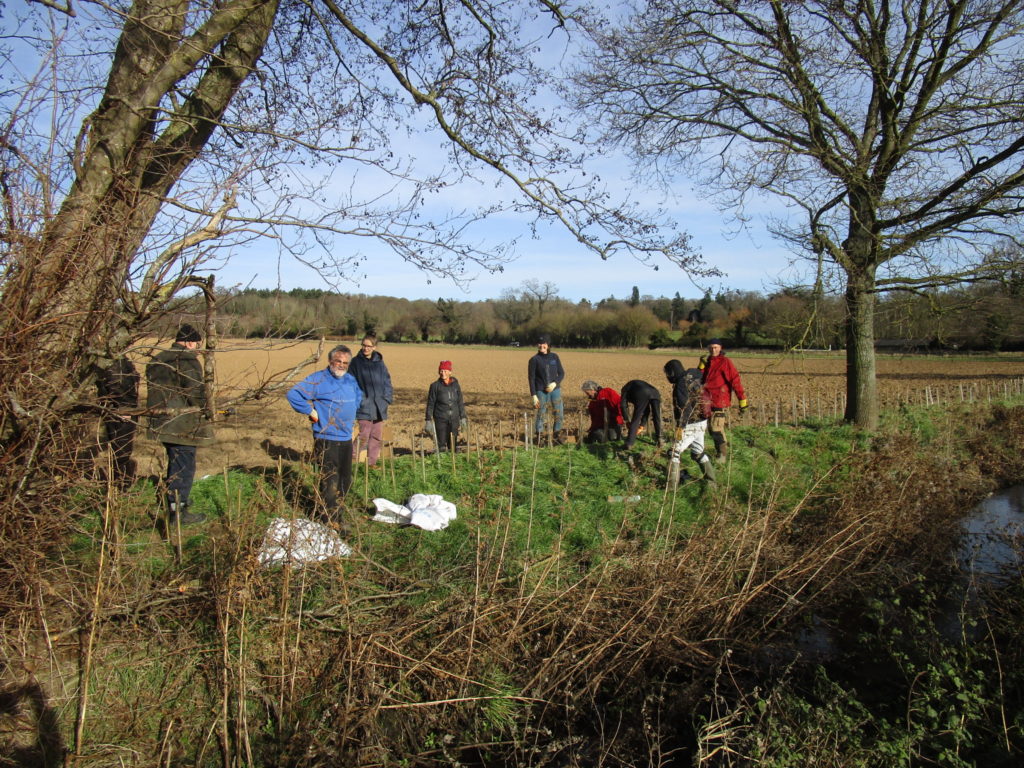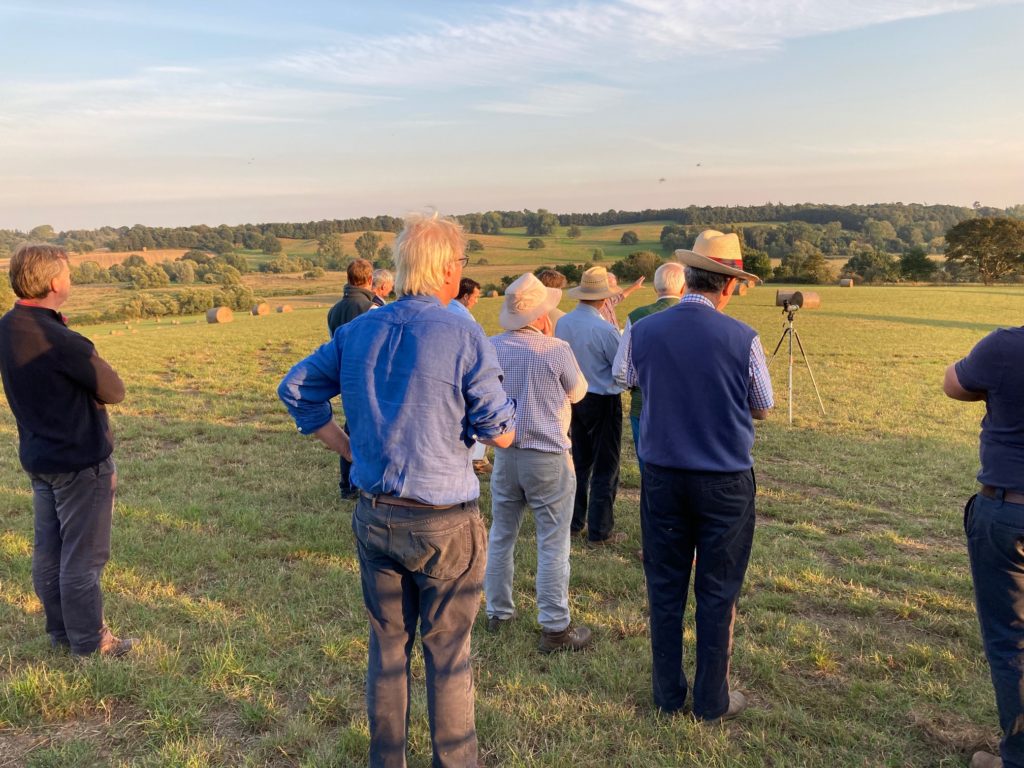The Stour Valley Farmer Cluster is a group of thirty-four farmers managing around 8,500ha of land in and around the Dedham Vale AONB; the group started in a small way around 2017 before coming together more formally in 2019.
Most of the farms are mixed with arable land producing cereals for the brewing and baking industries and, animal feed, these grow in rotation with onions, potatoes and to a lesser extent, sugar beet – the latter processed at British Sugar in Bury St Edmunds.
Farmer members take climate change seriously; the group is already acting to better understand their current fam carbon account, the quality of the water leaving their farm ditches and, underpinning this, how they can improve the biodiversity of their farm alongside producing food of the highest quality.
Cattle are more numerous than sheep and are extensively grazed across grasslands through the river valleys; woodlands produce some high-quality timber, biomass, and firewood. Willow plantations on wet areas are seen as an important crop for their high-grade timber used by Essex and Suffolk makers of world class cricket bats.

New hedgerow project
The National Farmers Union has an ambition for the industry to reach Net Zero by 2040, 10 years ahead of the government’s target, and the Stour Valley Farmer Cluster is working towards this.
Winter 2021-22 saw 12 farms in the group work, in partnership with Suffolk Preservation Society representing the Council for Protection of Rural England (CPRE) in the county, to plant a fabulous 2.5 miles of new hedgerow and restore a further 1.5 miles as part of the national CPRE Hedgerow Heroes Project.
Hedgerows have many benefits to wildlife and the environment. They provide wildlife corridors and an abundance of spring and early summer blossom for insects, as well as winter fruits for small mammals such as the AONB flagship species dormouse and farmland birds. They also play a vital role in reducing carbon in the environment.
The new hedge planting has been undertaken by a mixture of the farmers themselves, a team of fabulous volunteers from the AONB who surveyed an amazing 28.5kms over the preceding summer to identify high priority sites for restoration and planting, and local contractors.
The newly planted hedges are all native species and farmers involved in the project have committed to removing the guards and spirals once the hedge is established and either re-using or responsibly recycling or disposing of them.
The young by then established hedge will be cut with the brash piled on top to promote low growth and structure improving the wildlife and landscape value of the boundary. This approach has enabled a lower cost of planting and thus a greater length of new hedge delivered.

Reducing carbon
Once the new 2.5 miles of hedge are established as tall, wide features in the landscape 15 years after planting, they will sequester an additional equivalent of 36 tonnes of CO2/year (data from Farm Carbon Toolkit).
Collectively, Stour Valley Farmer Cluster farms already have c217 miles of hedgerow and 900ha of woodland on their farms; as part of the understanding of how the habitats already in place contribute to offsetting crop production emissions, a group of eight Stour Valley Farmer Cluster farms are about to embark on an in-depth farm carbon accounting exercise.
This project is being supported and part funded by Defra’s Farming in Protected Landscape grant scheme through the Dedham Vale AONB and follows on from a pilot project on one of the farms in 2021.
The farms will be given technical support through the exercise by the team at the farmer led organisation, Farm Carbon Toolkit (FCT). Using the data from the participating farms, the FCT team will also provide an overview farm carbon account for all the Cluster Farms. Farms will use their carbon accounting information to inform their use of fossil fuels, raw materials, cropping and land management choices.
As you walk in the Dedham Vale you may well see much less bare ground over winter as cover crops such as the glorious purple flowering phacelia which sown straight after harvest will provide an autumn boost of nectar for bees and other insects.
Cover crops significantly reduce nitrogen leaching, protect vulnerable soils from heavy rainfall events and high winds and supress weeds, remaining in place until being destroyed, ideally by grazing, rolling, or crushing ahead of sowing spring crops.
Long established meadows which are a characteristic feature of the AONB also have a significant role to play in carbon sequestration as their stable soils very effectively lock nutrients.
Grazing patterns may also change as grassland management is refined to better maintain the pasture and more livestock are introduced and integrated into the arable system. The farm carbon information will also be used to inform enhanced management of farm habitats such as hedges and woodlands.

Improving Biodiversity
Amidst the national discussions on climate change and actions we may be taking, there is little benefit if collectively we are not addressing the issues around poor biodiversity.
If we don’t have rich habitats for insects that have a vital role as crop pest predators and pollinators, let alone the colourful butterflies and dragonflies, we are not doing our very best for the planet.
The Stour Valley Farmer Cluster also has projects and are committed to improving biodiversity on their farms. The group welcomes new farmer members in the AONB and immediate environs. Find out more at www.farmerclusters.com/profiles/east-of-england/the-stour-valley. In collaboration with the AONB volunteer programme there are also opportunities to get involved in some on-farm projects. Learn more at www.dedhamvalestourvalley.org.

